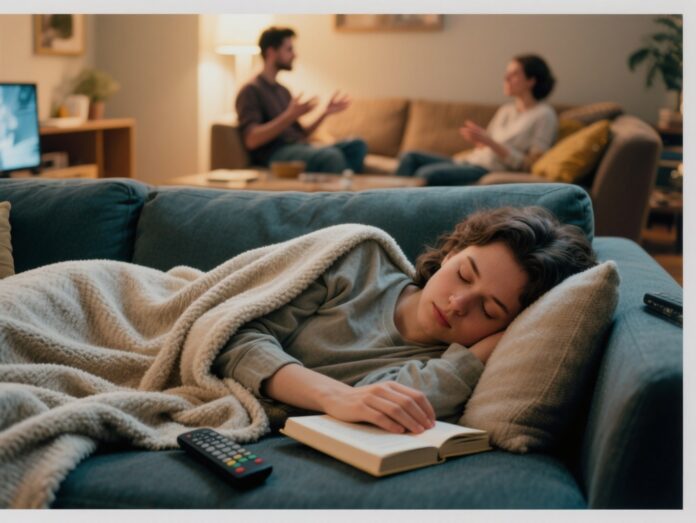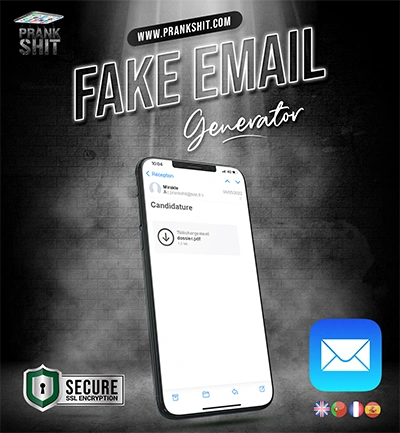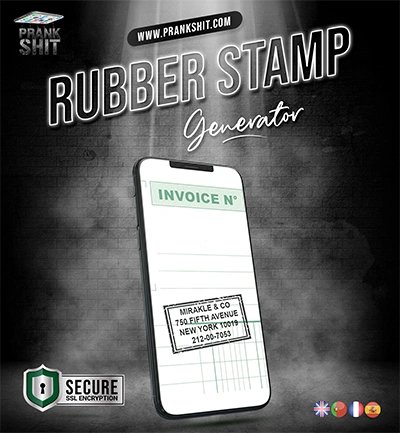We’ve all been there. Your roommate barges into your room at 2 AM wanting to discuss their dating drama. Your boss lingers by your desk at 5:30 PM with “just one more task.” Or maybe you’re on a plane and the chatty passenger next to you won’t stop talking about their cat’s digestive issues. Sometimes, the best escape route is the oldest trick in the book: pretending to be fast asleep.
Learning how to fake sleep isn’t just about avoiding awkward conversations. It’s an art form that requires finesse, timing, and a deep understanding of what real sleep actually looks like. Master these techniques, and you’ll have a foolproof way to dodge uncomfortable situations, sneak in some peace and quiet, or simply buy yourself time to think.
Ready to become a sleep-faking virtuoso? Let’s dive into the science and strategy behind convincing slumber simulation.
Why Would Anyone Want to Pretend to Be Asleep?
The reasons for faking sleep are as varied as they are relatable. Parents might use this technique to avoid dealing with a toddler’s 3 AM demands for water (for the fifth time). College students perfect it to escape their roommate’s midnight study sessions that somehow always involve loud snacking.
In professional settings, the fake sleep trick can be a lifesaver during long flights when you need to avoid small talk with colleagues. Some people use it to sidestep uncomfortable family conversations during holiday gatherings, while others employ it strategically to get out of last-minute plans they never wanted to attend in the first place.
The key is knowing when and how to use this skill responsibly. Think of it as a social tool rather than a way to shirk important responsibilities.
Physical Techniques for Realistic Sleep Simulation
Master Your Breathing Pattern
The most crucial element of how to fake sleep breathing is getting the rhythm right. Real sleepers breathe slowly and deeply, with a natural pause between exhales and inhales. Count to four on the inhale, hold for two counts, then exhale for six counts. This creates the slow, steady pattern that sleeping people naturally develop.
Avoid the temptation to hold your breath or breathe too shallowly. These are dead giveaways that you’re awake and concentrating. Let your breathing be audible enough to hear but not exaggerated. The goal is to sound like someone in light sleep, not someone hyperventilating or holding their breath underwater.
Relax Every Facial Muscle
Your face gives away more than you think. When we’re truly asleep, our facial muscles completely relax. This means no furrowed brows, no tight lips, and definitely no subtle eye movements that suggest you’re listening intently to every word being said around you.
Let your jaw hang slightly open—not enough to drool, but enough to look genuinely relaxed. Your eyelids should rest naturally closed without any tension. If you feel like you’re squeezing your eyes shut, you’re trying too hard. Real sleepers have a peaceful, almost blank expression.
Perfect Your Body Position
How you position your body can make or break your performance. The best way to fake being asleep is to choose a natural sleeping position and commit to it completely. Side sleepers should curl up naturally with one arm under the pillow. Back sleepers should let their arms rest loosely at their sides or across their chest.
Avoid rigid, uncomfortable positions that no one would actually sleep in. Your body should look settled and comfortable, as if you’ve been in that position for a while. Don’t forget about your hands—they should be relaxed, not clenched into fists or positioned in ways that suggest you’re ready to spring into action.
Expert-Level Acting Techniques
Simulate Natural Eye Movement
Here’s where fake sleep tricks get advanced. During REM sleep, our eyes move rapidly beneath closed lids. You can simulate this very subtly by occasionally allowing your closed eyes to drift slightly left or right. The key word here is “occasionally”—maybe once every few minutes, and never in response to sounds or movements around you.
This technique requires practice because it’s easy to overdo it. The movements should be barely perceptible and completely random. Think of it as adding a tiny detail that most people won’t consciously notice but will subconsciously register as authentic.
React Appropriately to Environmental Sounds
Real sleepers don’t ignore every sound around them, but they don’t respond immediately either. If someone drops something or speaks loudly, a sleeping person might shift slightly, adjust their breathing pattern, or make a small unconscious movement several seconds later.
The trick is in the timing and subtlety. Don’t react instantly to sounds—that’s what awake people do. Instead, wait 10-15 seconds, then perhaps shift your position slightly or change your breathing rhythm as if the sound penetrated your subconscious but didn’t wake you.
Master the Art of Realistic Snoring
Light, occasional snoring can add authenticity to your performance, but this is risky territory. Fake snoring often sounds exactly that—fake. If you’re going to attempt this, keep it very subtle. A slight nasal sound on every fourth or fifth exhale is more believable than consistent, theatrical snoring.
Practice this technique when you’re alone first. Record yourself to hear how it sounds, and remember that most people don’t snore loudly or consistently throughout their sleep cycles.
The “Sleepy Phone Drop” Technique
One of the most convincing fake sleep tricks involves your smartphone. If you’re pretending to fall asleep while using your phone, let it gradually slip from your hands as if you’re losing consciousness. Don’t drop it dramatically—let it slide slowly and naturally as your grip relaxes.
This technique works particularly well because it’s something everyone has experienced. The gradual loosening of grip as someone falls asleep is universally recognizable and highly convincing.
Common Mistakes That Blow Your Cover
Keeping Your Eyes Slightly Open
This might seem like a good way to monitor what’s happening around you, but it’s actually one of the biggest tells that you’re awake. Sleeping people’s eyes are fully closed, period. Any gap between your eyelids, no matter how small, will be noticed by observant people.
If you need to see what’s going on, rely on your other senses. You can hear footsteps, voices, and movements without compromising your cover by peeking.
Reacting Too Quickly to Stimuli
When someone says your name or makes a noise, resist the urge to respond immediately. Real sleepers either don’t respond at all or have a delayed, groggy reaction if the stimulus is strong enough to wake them. An instant response to your name being called is a dead giveaway that you’ve been awake the whole time.
Overacting the Sleep Performance
The biggest mistake people make when learning how to trick someone into thinking you’re asleep is trying too hard. Theatrical breathing, exaggerated position changes, and obvious fake snoring will fool no one. Real sleep is subtle, quiet, and natural.
Less is more when it comes to sleep simulation. Focus on stillness, natural breathing, and genuine relaxation rather than putting on a performance.
Forgetting About Your Body’s Natural Responses
Your body has natural responses that continue even during fake sleep. Don’t suppress normal functions like swallowing, small muscle twitches, or adjusting your position slightly. These tiny movements actually make your performance more believable because they’re what real sleepers do unconsciously.
Advanced Strategies for Different Scenarios
The Public Transportation Sleeper
Mastering how to act like you’re sleeping on buses, trains, or planes requires special considerations. You need to account for movement, noise, and the fact that strangers might try to wake you if you’re in their seat or blocking an aisle.
Choose a position that’s sustainable for long periods and won’t cause you to actually fall asleep. Keep your belongings secure, and be prepared to “wake up” naturally when you reach your stop.
The Bedroom Fake-Out
When pretending to be asleep in your own bed, authenticity is crucial because this is where people expect to find you genuinely sleeping. Make sure your room looks like you’ve been sleeping—rumpled sheets, perhaps a book on the nightstand, your phone charging nearby.
The bedroom scenario allows for more natural positioning and longer-term commitment to the act. You can afford to stay in character longer because the environment supports your story.
The Couch Sleeper
Falling asleep on the couch is so common that it’s one of the most believable scenarios for fake sleep. Position yourself as if you were watching TV or reading and gradually dozed off. Leave evidence of your activities—the remote nearby, a book open on your chest, or your laptop still warm.
This scenario is perfect for avoiding late-night visitors or getting out of social obligations that are happening in your own home.
Taking Your Deception Game to the Next Level
If simulating sleep isn’t enough for your situation, why not add some digital backup to your story? Sometimes you need more than just physical acting to sell your narrative. Maybe you need proof that you were “busy” when someone called, or evidence that you couldn’t respond to that text because you were clearly occupied.
This is where tools like Prankshit.com become invaluable for your theatrical toolkit. You can generate fake SMS conversations, missed call logs, or WhatsApp chats that support your “I was sleeping” story. Create a fake message from your mom asking you to call her back, or generate a missed call from your boss that explains why you couldn’t answer when your friend was trying to reach you.
Prankshit offers these generators without requiring registration, without annoying ads, and with regular updates to keep everything looking authentic. The platform supports multiple languages and even offers an option to remove watermarks for a small fee if you need that extra touch of realism. These tools can add digital credibility to your physical performance, creating a complete narrative that’s hard to question.
Professional Tips for Long-Term Success
Study Real Sleepers
The best way to improve your fake sleep technique is to observe people who are actually sleeping. Notice how their breathing changes, how their bodies naturally settle, and how they respond (or don’t respond) to environmental stimuli.
Pay attention to the small details: how someone’s hand falls when they relax, the way their facial expression changes, and the rhythm of their breathing throughout different sleep stages.
Practice Makes Perfect
Like any skill, learning how to pretend to be asleep effectively requires practice. Try your techniques when you’re alone first, then in low-stakes situations before using them when it really matters.
Practice controlling your breathing, relaxing your facial muscles, and maintaining positions for extended periods. The more natural these techniques become, the more convincing your performance will be.
Know Your Limits
Understand that fake sleep is a temporary solution, not a long-term strategy for avoiding responsibilities or difficult conversations. Use this skill sparingly and responsibly, and always be prepared to “wake up” gracefully when the situation calls for it.
Also, be aware that some people are naturally more observant than others. Your technique that works perfectly on your distracted roommate might not fool your detail-oriented mother or that one friend who notices everything.
The Art of the Perfect Sleep Fake
Mastering the art of fake sleep is like perfecting any other performance skill—it’s all about the details, timing, and knowing your audience. The difference between a convincing sleeper and an obvious faker lies in understanding what real sleep actually looks like and sounds like, then replicating those qualities with subtle precision.
Remember that the best fake sleep performance is one that nobody questions. It should feel so natural and authentic that observers don’t even think to doubt it. Whether you’re dodging an uncomfortable conversation, buying yourself some thinking time, or simply trying to get a moment of peace in a chaotic day, these techniques will serve you well.
Use these skills responsibly, practice them regularly, and always remember that sometimes the best way to fake sleep is to just get some real rest instead. Sweet dreams, and may your performances be Oscar-worthy! 😴




